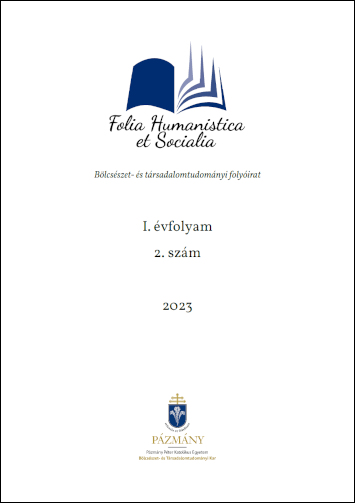Published 31-12-2023 — Updated on 11-06-2024
Copyright (c) 2023 Dechert Adél Eszter

This work is licensed under a Creative Commons Attribution 4.0 International License.
Abstract
Several debates emerged from Stanley Kubrick’s 1980 adaptation of Stephen King’s The Shining, mostly because of the notable changes that the director made in the film. This essay aims to explore the possible reasons behind these changes by introducing the main differences, such as the tone, themes, and the endings. The analysis particularly focuses on the main character’s representations, not only because it is the most significant difference, but also because the character of Jack Torrance is the most memorable element of the story, especially in the case of Kubrick’s film. My essay aims to demonstrate that Kubrick’s divergent approach is what led to the story’s new elements, layers and interpretation.
References
- Allen, G. (2015). The Unempty Wasps’ Nest: Kubrick’s The Shining, Adaptation, Chance, Interpretation. Adaptation, 8(3), 362-365. https://doi.org/10.1093/adaptation/apv009
- Andrew, D. (1984). Concepts in Film Theory. Oxford University Press.
- Ciment, M. (2003). Kubrick on The Shining. Kubrick: The Definitive Edition, edited by Michel Ciment, Faber & Faber.
- Cook, D. A. (1984). American Horror: ‘The Shining’. Literature/Film Quarterly, 12(1), 2-4. https://www.jstor.org/stable/43797366
- Ghosh, D. (2019). Book versus movie: How Stanley Kubrick’s The Shining’ moves away from Stephen King – and succeeds. Scroll.in, https://scroll.in/reel/927082/book-versus-movie-how-stanley-kubricks-the-shining-moves-away-from-stephen-king-and-suceeds.
- Greene, A. (2014). Stephen King: The Rolling Stone Interview. Rolling Stone, https://www.rollingstone.com/culture/culture-features/stephen-king-the-rolling-stone-interview-191529/5/.
- Hoile, C. (1984). The Uncanny and the Fairy Tale in Kubrick’s ‘The Shining’. Literature/Film Quarterly, 12(1), 5-10. https://www.jstor.org/stable/43797367
- Hornbeck, E. J. (2016). Who’s Afraid of the Big Bad Wolf? Domestic Violence in The Shining. Feminist Studies, 42(3), 692-715. https://www.jstor.org/stable/10.15767/feministstudies.42.3.0689
- King, S. (2000). On Writing: A Memoir of the Craft. Scribner.
- King, S. (2007). The Shining. Hodder & Stoughton Ltd.
- Manchel, F. (1995). What About Jack? Another Perspective on Family Relationships in Stanley Kubrick’s ‘The Shining’. Literature/Film Quarterly, 23(1), 72–74. https://www.jstor.org/stable/43798713
- Nolan, A. (2011). Seeing is Digesting: Labyrinths of Historical Ruin in Stanley Kubrick’s The Shining. Cultural Critique, 77, 180–188. https://www.jstor.org/stable/10.5749/culturalcritique.77.2011.0180
- Smith, G. (1997). ’Real Horrorshow’: The Juxtaposition of Subtext, Satire, and Audience Implication in Stanley Kubrick’s ‘The Shining’. Literature/Film Quarterly, 25(4), 302. https://www.jstor.org/stable/43796810
- The Shining. Directed by Stanley K., Warner Bros., 1980.

